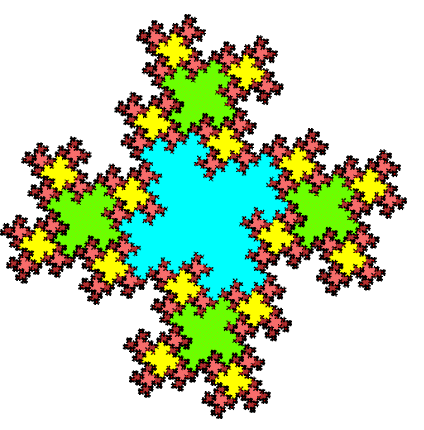| So far, these fractal tiles are just square or hexagonal
(Gosper tiles) tessellations
with the boundaries of the tiles modified to be fractals. |
| While there is infinite detail in a fractal curve,
seeing this is subtle and could hardly satisfy Escher's interest in representing
infinity within a bounded region. |
|
| But suppose we run the process backward: instead of building up
larger copies, we subdivide this tile into five smaller copies. |
 |
|
| If we do this carefully, we can create cascades of smaller copies, accumulating
not just along the limiting circle, as in Escher's Cricle Limit
images, but in infinitely many pockets scattered thhroughout the tile. |
| For example, take the tile constructed in our method 1 example. Subdivide this into
five congruent tiles. Paint the middle blue and leave it unchanged. |
| Next, subdivide each of the remaining four tiles into five pieces. Paint the
middle green and leave them unchanged. |
| Subdivide the each of the remaining 16 subtiles into five pieces. Paint the
middle yellow and leave them unchanged. |
| Continuing in this way, we produce a cascade of tiles within tiles within tiles, thoroughly
mixed around the other tiles. |
 |
| Imagine these tiles as starfish, for example,
and think of what Escher could have done with this pattern. |


